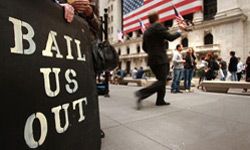Since the late 1900s, few industries in the U.S. have escaped government regulation. The free market is a hallmark of capitalism, but government sometimes intervenes if and when it goes awry. Often, that need is prompted by cries from some part of the public.
Regulation can be designed to protect the public against monopolies, high prices, poor service or some danger. It can also be designed to insulate businesses and industries against the free market's risks.
Advertisement
During the late 19th and the 20th centuries, an alphabet soup of federal regulatory agencies grew up. Most people have heard of the biggies:
- FCC: Federal Communications Commission. This covers the telephone, telegraph and broadcasting industries.
- ICC: Interstate Commerce Commission. This body governs railroads, trucking and shipping.
- FDA: Food and Drug Administration. This agency regulates products and their labels.
- SEC: Securities and Exchange Commission. This body covers our stock exchanges.
- OSHA: Occupational Safety and Health Administration. This covers the safety and health of our workers.
- EPA: Environmental Protection Agency. This takes care of the environment and human health concerns.
- FAA: Federal Aviation Agency. This body regulates air travel.
That's only a start. There are many others, as well as state regulatory agencies.
But whenever there's regulation, a push for deregulation follows. In the late 1970s and 1980s, regulatory reform became popular politically. The reasons varied: Sometimes, industries thought they could be more profitable with less government intervention. Sometimes, consumers and public-interest groups thought regulators had grown too cozy with the industries they regulated. Other times, regulations didn't work or became inefficient as years passed. When inflation was bad, businesses felt that price regulations made it hard for them to respond quickly enough.
Deregulation can be accomplished legislatively, with Congress passing new laws or amending old ones. Or it can be handled administratively, with agencies writing new rules or choosing not to enforce some. Usually, deregulation isn't complete: Some regulations are removed or eased, but others remain.
Deregulation doesn't always work as expected. Some economists believe that deregulation usually leads to someone being hurt. [source: McKenzie] It's just not easy to predict whom.
Keep reading to find some examples of surprise effects -- some pleasant, but most not so much -- of deregulation.





